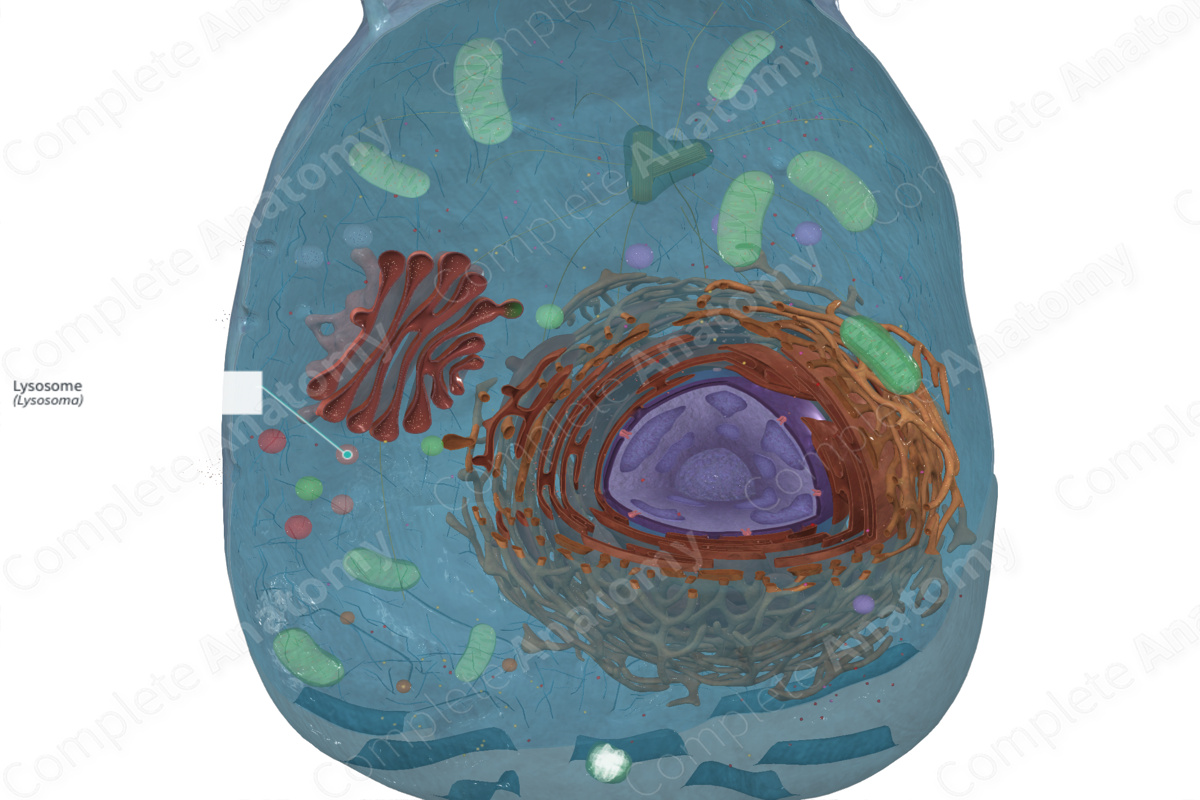
Quick Facts
A lysosome is a membrane-bound cytoplasmic organelle, generally 250–750 nm in diameter, containing hydrolytic enzymes in an acidic environment and involved in intracellular digestion. Lysosomal enzyme defects result in the progressive accumulation of undigested products within the cell, which leads to lysosomal storage disease (Dorland, 2011).
Structure and/or Key Feature(s)
Lysosomes are single, membrane-bound, usually spherical, organelles (0.05-0.5 μm) that contain very strong, hydrolytic, destructive enzymes. The hydrolytic enzymes are redirected from the rough endoplasmic reticulum and Golgi complex secretory pathways to primary lysosomes.
Traditionally, lysosomes were described as being bound by a membrane produced in the Golgi complex. That membrane was to protect the exterior part of the lysosomes, and the rest of the cell, from the destructive enzymes even though they are inactive at the pH of the cytosol.
The primary lysosome fuses with the membrane of an endosome or phagosome and becomes a secondary lysosome or late endosome in which the hydrolytic enzymes are activated and digest the contents of that endosome or phagosome (Ross and Pawlina, 2006).
Function
Lysosomes are involved in digesting materials ingested by the cells, other cell components or large molecules, and even damaged or redundant organelles (Ross and Pawlina, 2006).
List of Clinical Correlates
Many diseases result from deficiencies of lysosomal enzymes. The different diseases affect many cell types so they present as a variety of symptoms. The diseases are characterized by the absence (or inactivity) of specific lysosomal enzymes and so their inability to degrade certain substances. These substances then accumulate in the cell cytoplasm and disrupt normal functional activities of the cell. The inherited “lysosomal storage disease” or “Tay-Sachs disease” is a non-curable, deadly disease that mostly causes damage to nerve cells (neurons). Missing or defective lysosomal enzymes are unable to digest some complex membrane lipids and so this builds up within cells (Ovalle, Nahirney and Netter, 2013; McKinley, O'Loughlin and Pennefather-O'Brien, 2016).
References
Dorland, W. (2011) Dorland's Illustrated Medical Dictionary. 32nd edn. Philadelphia, USA: Elsevier Saunders.
McKinley, M. P., O'Loughlin, V. D. and Pennefather-O'Brien, E. E. (2016) Human Anatomy. 5th edn.: McGraw-Hill Education.
Ovalle, W. K., Nahirney, P. C. and Netter, F. H. (2013) Netter's Essential Histology. ClinicalKey 2012: Elsevier Saunders.
Ross, M. H. and Pawlina, W. (2006) Histology: A text and atlas. Lippincott Williams & Wilkins.
